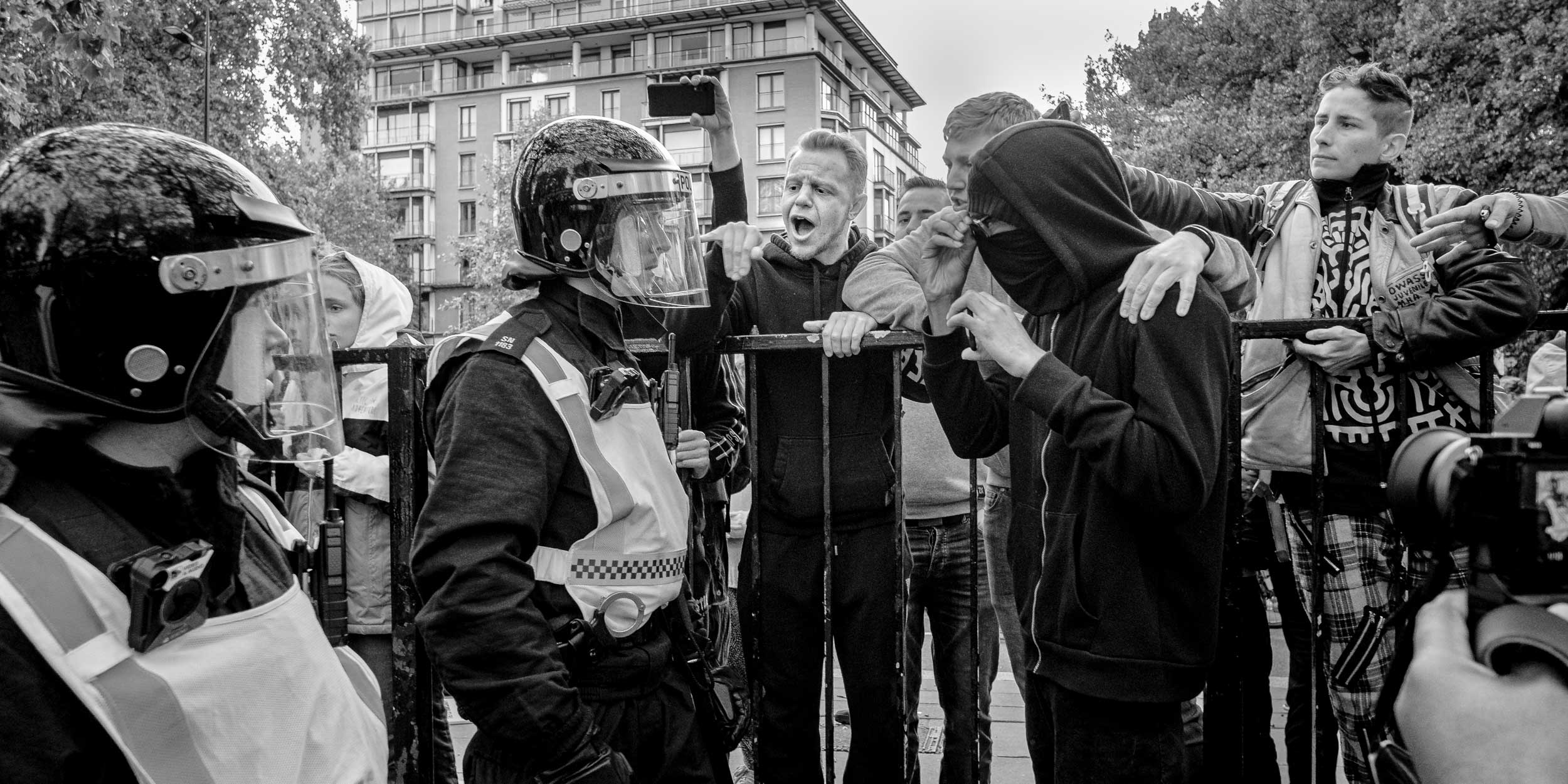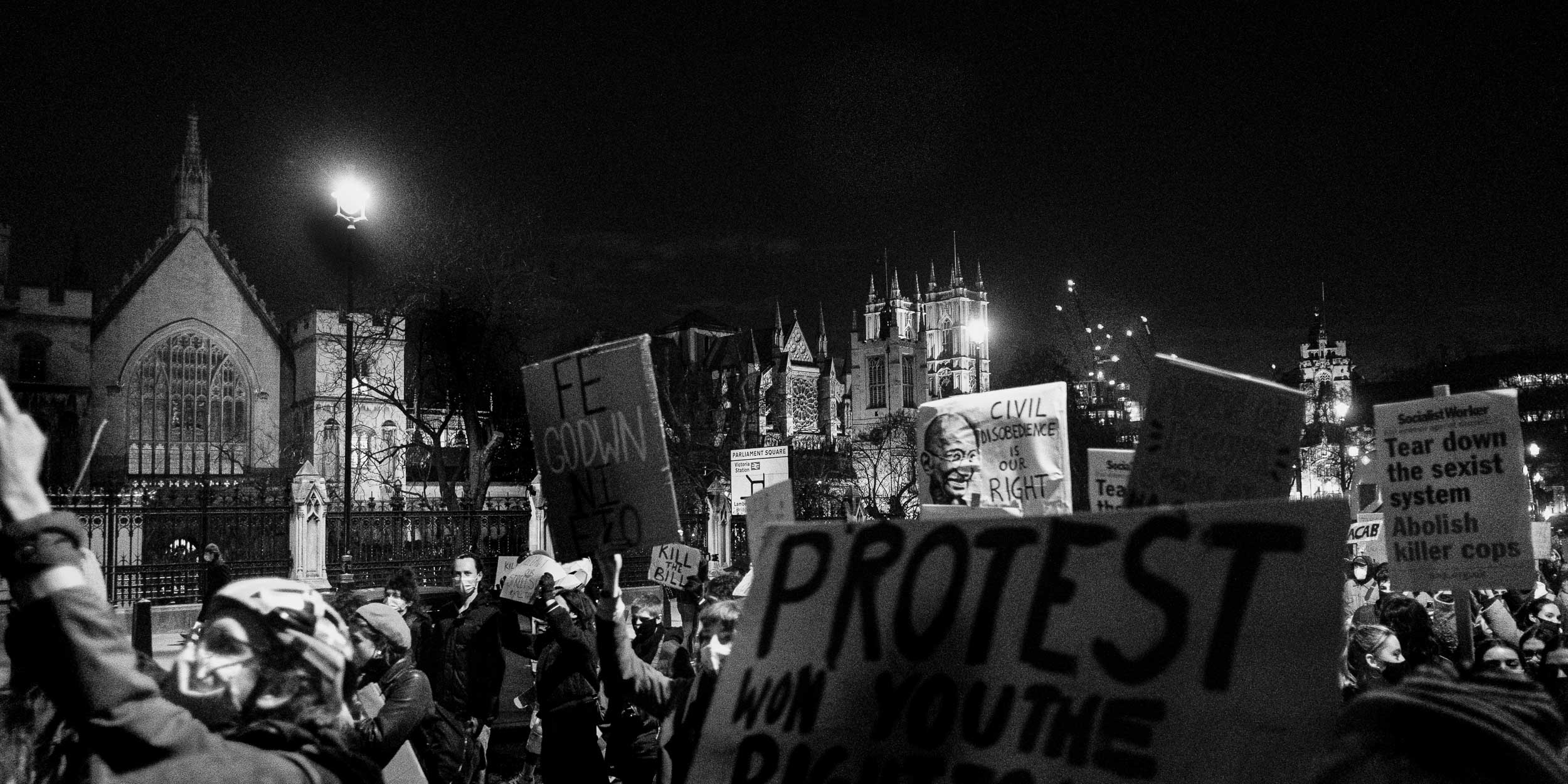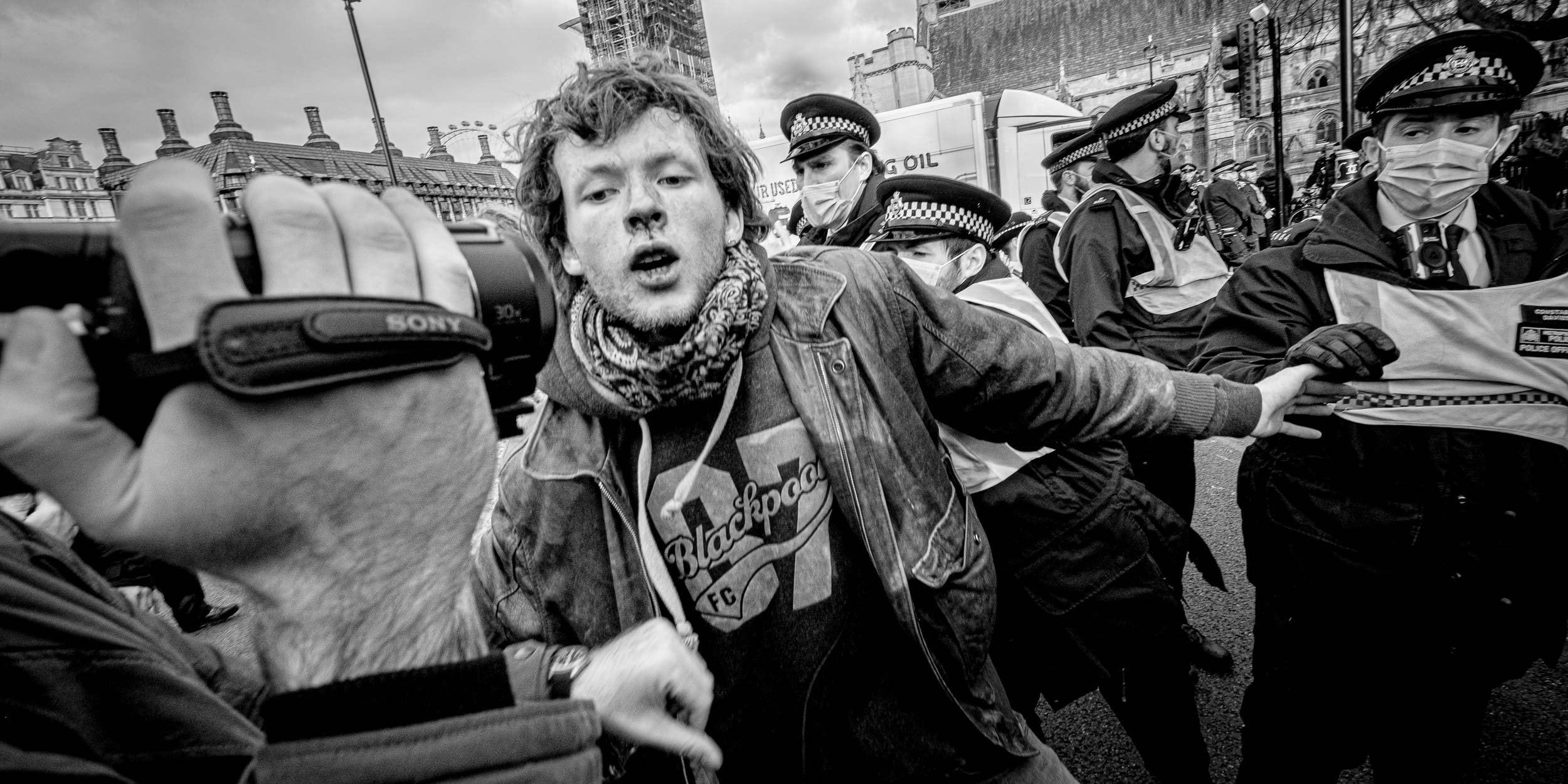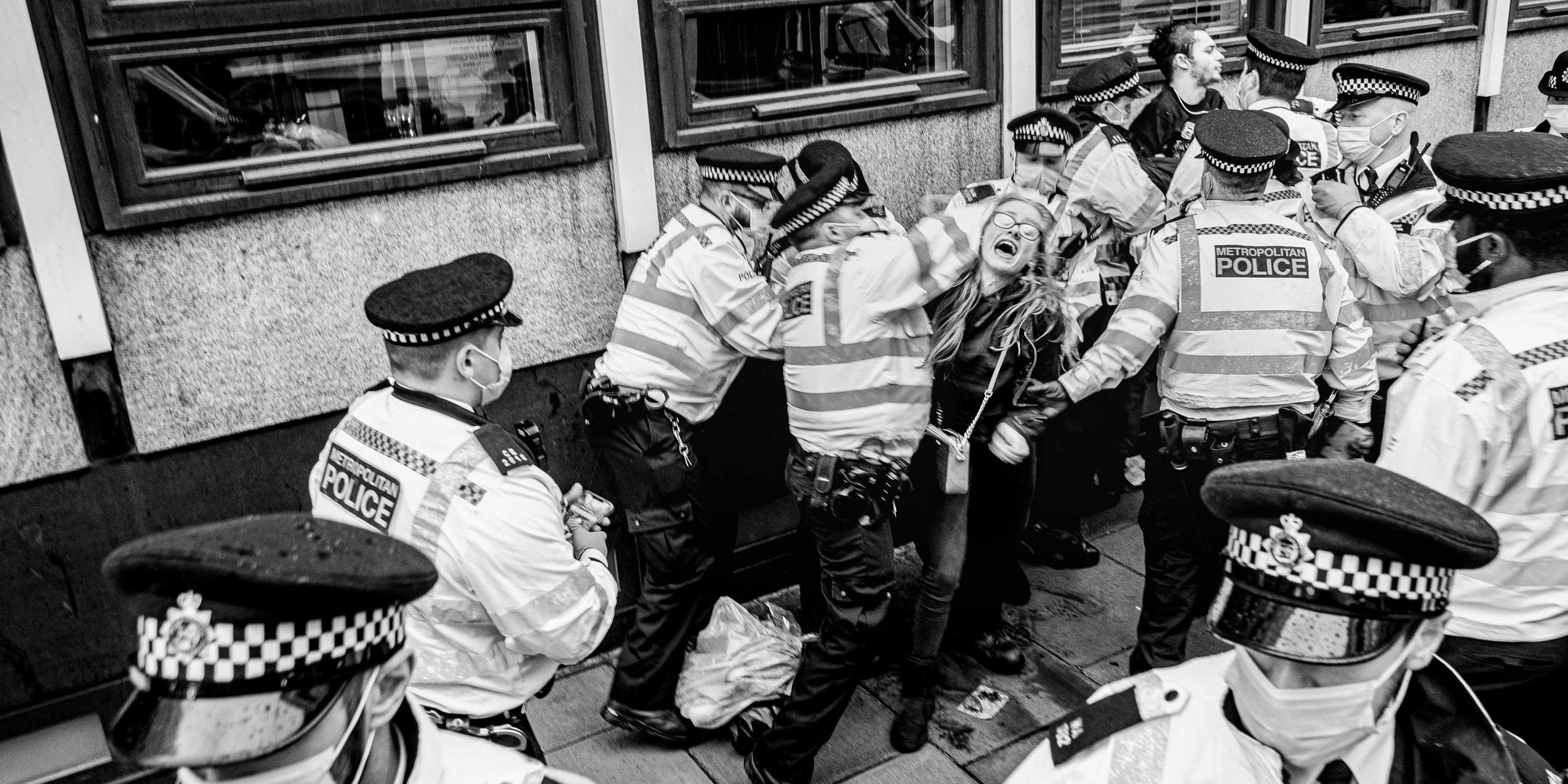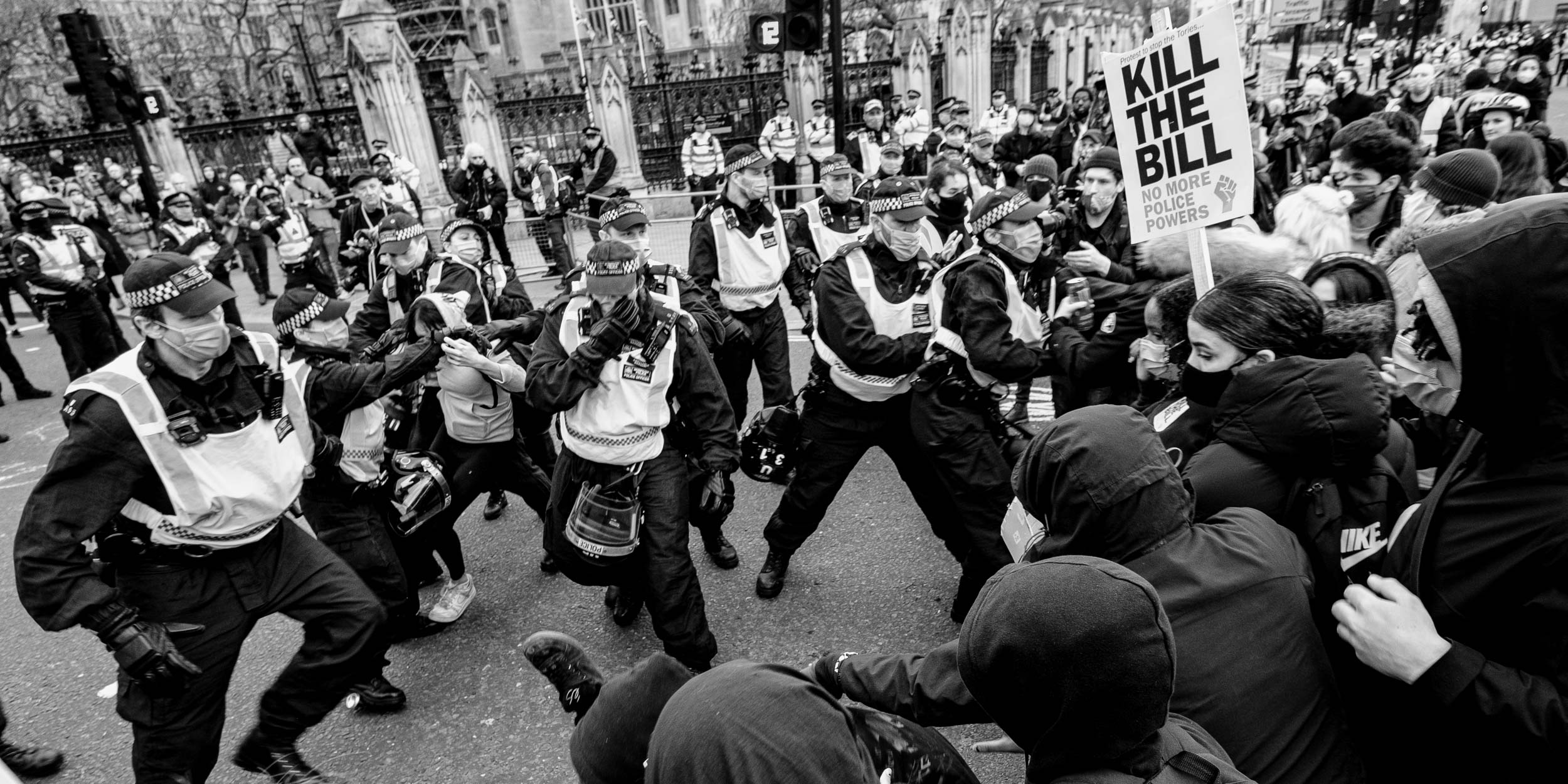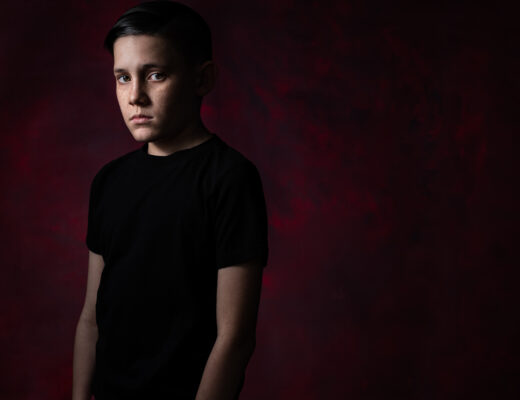‘We Do Not Consent’ is project that gives an in-depth look at the protests and demonstrations that took place in London during COVID lock downs. My aim was to examine the use of police powers, the behaviour of the crowd of demonstrators who could sometimes become angry and the tactics that the police used to control them. It was shot on the streets of London between May 2020 and May 2021 – the high point of the COVID lockdowns in England.
Abandoning my usual set up of a pair of Canon 5DS, I switched to a couple of X-Pro2s, usually with an XF18mmF2 on one body and either the XF35mmF1.4 or the XF10-24mmF4 on the other. They proved ideal for moving through tightly packed crowds and for carrying on long days when I sometimes covered three or four demonstrations across central London.
I’ve been shooting protests in the UK since early 2019, starting with the demonstrations that marked Britain’s decision to leave the European Union, and covering the early days of Extinction Rebellion and Black Lives Matter. In that time, I’ve shot at well over 70 demonstrations but when the COVID lockdowns began in in 2020, it was clear that there was a very different mood of confrontation between protestors and the police. The crowds were angrier, with the rise of numerous QAnon influenced anti-lockdown and antivaxx protests, along with continuing climate protests and demonstrations calling for racial justice and curbs on police powers.
These protests were met with a more stringent police presence, backed up with new powers issued to deal with public order during COVID, meaning that many demonstrations and protests were in defiance of government orders, and many were shut down, leading to violent confrontations during which police and protestors alike were injured.
The convention in the UK is that we are policed by consent, and I felt that many of these protests were exploring or confronting what consent actually means. Some protests were against new laws that would severely curb the rights of people to demonstrate and others were questioning how the police are funded or how far their remit extends. “We do not consent” became a frequent chant and was often featured on banners and placards.
There were so many protests during this period that my shoots almost became a practised routine: during the week I’d scour social media and keep in touch with contacts, researching what was likely to happen and where. Then, usually on a Saturday, I’d get the Tube from where I live in Brixton (south London) and head up to Parliament Square or Trafalgar Square and mingle with the crowds, chatting to people and other photographers, finding out more about the protest.
Often there’d be a march so I’d try to stay ahead of the crowd, keeping an eye on what was happening. Many of the photographs capture either the start or the end of a march, when the police were trying to prevent it taking place or to disperse a crowd when they’d decided it was in breach of lockdown rules. I spent most of my time trying to get between the police and protestors, shooting on a really wide-angle lens to try and show what it’s like to right in the middle of a confrontation.
This is where the Fujis really came into their own; they were light and very fast to use, enabling me to show what it was like in the thick of the action. The ultrawide 10mm end of the zoom gave incredible coverage and allowed me to be super close to protestors and police.
Coming from a TV background, I’m schooled in the 16×9 format, so being able to shoot with the viewfinder masked to this aspect ratio and the AcrosR simulation selected was a huge advantage. And even in the middle of a baton charge or a nighttime arrest, the preview image in the viewfinder helped me stay focused and check my exposure. The 16×9 format became an essential part of my process, as I wanted to show people what it’s like to be part of a huge mass of people who are marching, shouting or even fighting. Shooting as close and as wide as possible gave a real feeling of being immersed in the action, of being part of the frame.
I wasn’t really looking to show violence or angry confrontation but to show what happens when a heavily equipped, well-resourced police presence decides to exert force on a crowd. That usually meant targeting individuals for arrest and pulling them out of the crowd and attempting to take them away in a police van. Sometimes it could get quite violent and I know photographers who’ve been concussed, pepper sprayed and punched. I was certainly pushed around by police, had them deliberately try to block shots, been hit in the face with random flying bottles, and threatened both by police and a few protestors.
After around a year of shooting, I realised that I had a comprehensive set of pictures and approached a small publisher called Fistful of Books. I’d met Simon Robinson who runs the imprint at a book festival and knew he was interested in British documentary photography, so I sent him a selection of images and we began to chat about the project.
Simon decided that he’d like to publish a book and we spent a good few months working together on an edit that we both felt did justice to the events. We didn’t always agree on picture selections, and as a photographer it was good to be challenged over my choices or to have the meaning or content of a photograph scrutinised by an expert.
Simon was adamant that he wanted to find a book layout that would make the most of the panoramic format and to reveal the superb look of the Fuji images. After making several dummies and trying different formats and layout, he came up with a 200x400mm layout with a softcover binding held together with screws and we made a final selection of just under 50 photographs.=
‘We Do Not Consent’ is available from Fistful of Books, priced at £20.


